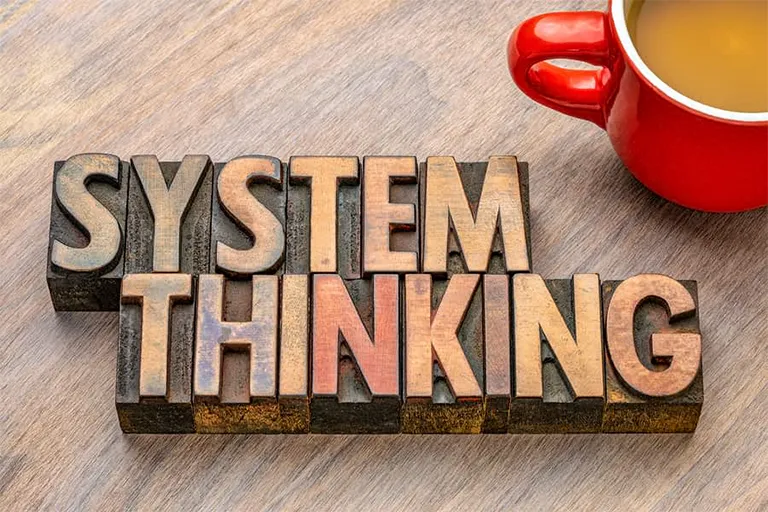In order to define the concept of feedback or feedback, the two concepts of open system and closed system that exist in the definition of system and system thinking should be examined first.
Systems that interact with their environment are called open systems. For every open system (Open System), input and output can be defined.
Input is the effects that the system receives from the environment, as well as the parameters and information that it receives from the environment.
The output is the effects that the system has on the environment and the parameters, information and behavior that are perceived and observed by the environment.
If part of the output of a system affects its input, we say that this system receives feedback from the environment .
This term was first used by Carl Ferdinand Braun about electrical systems. Of course, feedback had a negative meaning for him.
Ferdinand Braun realized that the antennas of his radio transmitter were interfering with the power system. In describing this disorder, he said: Our design is not good and it has feedback; It eats part of its output and the feedback spoils our work.
Later, Ross Ashby observed this interpretation in Ferdinand Brown’s analysis. He liked the word feedback and thought it was a beautiful expression. But he couldn’t convince himself that feedback is always a negative thing.
Ross Ashby was creating the science of cybernetics at the time. This science is considered to be the father of today’s control science.
Ross Ashby uses the word cybernetics in the sense that how many different states can a system have?
He believed that cybernetic systems have many states. For this reason, he considered human beings, living organisms and social systems as cybernetic systems.
Ashby concluded that feedback is an important feature in complex or cybernetic systems, and if we remove it from the system, the order of the system may collapse.
Here, Ashby coined the term positive feedback and negative feedback and defined them as follows:
Negative feedback is feedback based on which the system modifies its previous behavior and positive feedback is feedback based on which the system reinforces its previous behavior.
In his book titled Introduction to Cybernetics, he points out this important issue that in the real world, the number of system elements is so large and the variety of feedback is so great that it is not easy to distinguish whether the feedback is positive or negative, and even the cause and effect relationship separated in the interaction between the system and the environment.
Ross Ashby also coined another term that is still used today: he called systems with negative feedback mechanisms goal-directed systems.
Because the behavior of these systems was not only increasing or decreasing. Rather, their ultimate goal was to reach a desirable level and maintain it.
An example that Ashby liked and referred to was the car’s engine speed regulation system, which at that time was done with a device called a governor.
The performance of the governor system of the motors was in such a way that the output of the motor was connected to a vertical axis and rotates it. As the rotation speed increased, the two balls would spin further away from the center and pull down the lever, which would reduce the amount of fuel input to the engine accordingly. If the engine fell short of the target value, the bullets would fall lower due to their weight and the fuel valve would open wider to increase the engine speed.
Although still, a similar mechanism exists and is used in some old generators and this system is not completely extinct, in practice today, for example, a targeted system with negative feedback is used to regulate the temperature of the house or the temperature of the car. .
Ashby also proposed two other terms, which were Open-Loop Systems and Closed -Loop Systems.
He defined the systems that were somehow aware of their output as closed loop systems and the systems that were not aware of their output as open loop systems.
Internal feedback and external feedback
At first glance, we may conclude that feedback only makes sense in the interaction of the system with the external environment, and the loops that form inside the system are not called feedback.
But we must remember that the boundary of the system is not an external reality; Rather, it is just a contract for us to make it easier to understand the system and to make it possible for us to analyze its behavior.
Perhaps the following example establishes this discussion in a very simple way in our minds:
If you have ever used multi function printers, you know that many of them use an interesting and innovative mechanism to calibrate their nozzles.
These printers print an image on paper and ask you to put the same on their scanner screen so that they can see the result of their work and apply the necessary settings accordingly.
This is one of the most beautiful examples of feedback from the environment.

According to the definition of feedback that we all have in mind, we quickly consider this behavior of the printer as an example of feedback.
Our judgment is definitely correct and this mechanism is an example of feedback. But inside the same printer, there are tens or even hundreds of other feedback mechanisms.
Among other things, when the cartridges reach the end of their path during printing, they realize that they have reached the end by using small limit switches and must change the direction of their movement.
We cannot say that we do not consider these as feedback. Because they are not an example of information exchange with the environment and are only considered an internal event.
Limit switches are one of the parts that are installed and used with the purpose of creating feedback in mechanical systems.
The environment is what we define and is simply a convention. Therefore, wherever the result of an action affects the action itself in any way, we can say that there is a feedback mechanism.
Is the feedback correct or negative?
Early on, both the terms feedback and feedback were used and popular. It can even be said that feedback was more common. But in recent years, when sensitivity to Persian language has spread and people interested in this language have become active in social networks , many have come to the conclusion that the feedback is incorrect. Because “eat” (e.g.: eat) is an imperative verb and feedback does not mean close feedback. Regardless of whether we accept this argument or not, the term feedback is now more common and is used more in formal writing.













